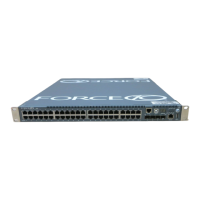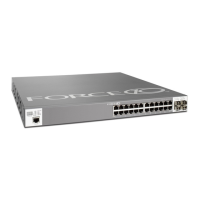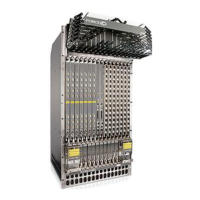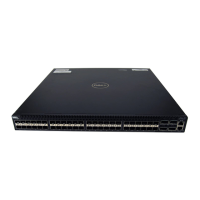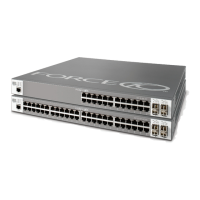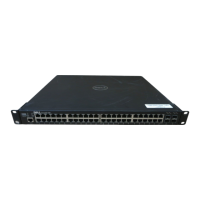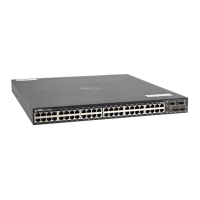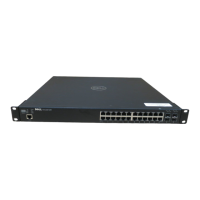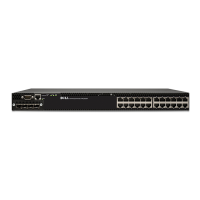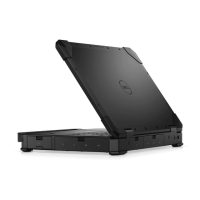Install the Z9000 | 23
Splitting QSFP Ports to SFP+ Ports
The Z9000 supports splitting a single 40G QSFP port into four 10G SFP+ ports using one of the
supported breakout cables.
For the system to recognize the port type change, you must enter the stack-unit portmode command. For
example:
stack-unit stack-unit port number portmode quad
•
stack-unit
: Enter the stack member unit identifier of the stack member to reset. Range: 0 to 7.
•
number
: Enter the port number of the 40G port to be split. Range: 0 to 124 in increments of 4.
Important Points to Know
• The unit number with the split ports must be the default (stack-unit 0). You can verify the unit number
using the show system brief command. If the unit ID is different than 0, it must be renumbered to 0
before the ports are split. Renumber the unit ID by using the stack-unit
id
renumber
0
command in
EXEC mode.
• The quad port must be in a default configuration before you can split it into four 10G SFP+ ports. The
40G port is lost in the configuration when you split the port, so be sure the port is also removed from
other L2/L3 feature configurations.
• For the split-port change to take effect, you must reload the system after issuing the change command.
Be sure to save your configuration.
Install the Solid State Drive
The Z9000 includes a Solid State Drive (SSD) that acts as another storage device. The SSD is shipped
installed in the Z9000 system and is located in a slot on the lower-right area on the I/O side as shown in
the following figure.
The SSD is field replaceable but not hot-swappable and supports drives that use 12 Volts and/or 5.0
Volts. Be sure to use only drives supported by Dell Force10.
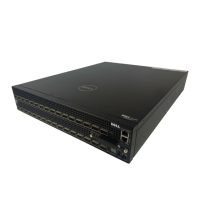
